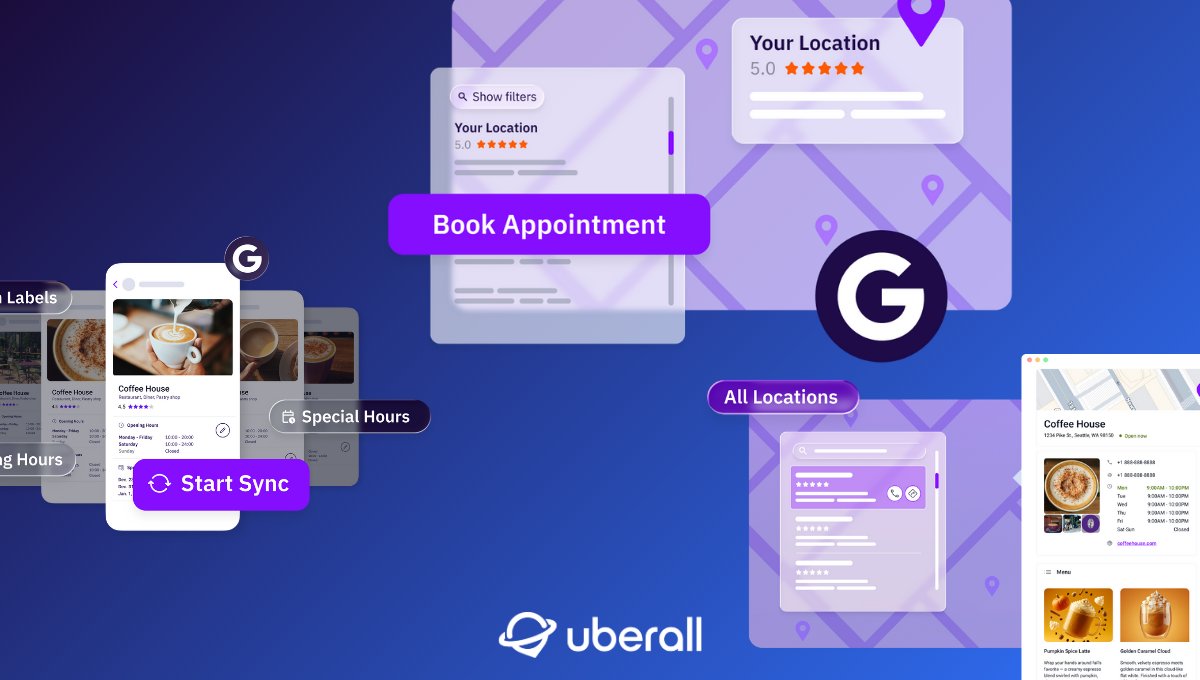
From Trust Signals to AI Signals: The Future Role of Reviews
Discover how UGC & detailed reviews function as data signals that affect how your brand shows up across search — straight from local SEO Rachel Ellen.
It can’t be overstated: Reviews have always acted as powerful trust signals for customers. Long before online platforms, people have always relied on word-of-mouth recommendations on where to shop, eat, stay, or avoid. Yet in the age of AI search, the role of reviews and a brand’s reputation is evolving — and fast.
In part 1 of this series, I look at the human side of reviews: How they build trust, empower teams, and fuel better local experiences. In this second instalment, I turn our attention to the future, exploring how reviews are shaping discovery and what it takes to manage review strategy at scale, without losing sight of authenticity or impact.
How to Win Over Consumers and AI with Reviews
With the rise of large language models (LLMs), AI-powered recommendations, and tools like Google’s AI Overviews, reviews are no longer just for people. They’re becoming part of how AI systems learn about businesses, shaping how they are described, summarized, and recommended in search results.
To put it simply, the quality, recency, and richness of your reviews now influence not just whether a customer trusts you, but whether an AI does.
So, how can you use your reviews to win over both consumers and AI in tomorrow’s era of marketing?
What Does the Ideal Review Now Look Like?
Reviews are no longer just reputation tools. They are data signals that affect how your brand shows up across AI Overviews, voice search, and even chatbot-generated answers. More specifically, reviews should be:
- Detailed — they should mention specific products, services, staff names, or store experiences; this helps AI form more accurate associations with your business.
- Keyword-rich and photo-enhanced to feed both structured and unstructured data into the ecosystem, influencing everything from AI summaries to voice assistant responses.
Imagine you’re planning your first hiking trip and want to be eco-friendly. You search via Google or a voice assistant (such as Siri or Google Assistant) for something like:
“best places to buy sustainable hiking gear near me”
In the past, your results would have been influenced mostly by traditional ranking signals, such as
- Proximity to your location
- GBP optimization and keyword relevance
- Star rating and volume of reviews as trust signals (e.g. “best” often filters for businesses with 4.0+ stars)
However, generative engines read far more deeply, including Google Business Profile descriptions, products/service data, and especially reviews that mention relevant keywords and experiences.
Here’s what that could look like in action:
“I absolutely love the staff at BaseCamp Outdoors. They are super knowledgeable and helped me find a waterproof jacket made entirely from recycled materials. They had loads of sustainable options and even explained how the brand offsets carbon. Easily my go-to for eco-friendly hiking gear!”
This single review contains all the right signals: eco focus, product mention, positive sentiment, staff interaction, and keyword alignment. Even if this business hasn’t optimized for “sustainable hiking gear” on their website or profile, this review did all the talking for them and could push them into a top AI response.
The way I see it, every review is a chance to help others, whether human or AI, discover what makes a local business special. As a Google Local Guide myself, I often write reviews with both customers and search engines in mind, calling out staff by name, sharing specifics, and using keywords naturally. It’s a small way to give back to great local businesses and a reminder that thoughtful feedback really does matter.
Why UGC Now Matters More Than Ever
AI is rewriting the search experience, and reviews are no longer just reflections of customer satisfaction. They are fuel for discovery, input for algorithms, and training data for AI.
Discovery through user-generated content is especially only growing in importance — not just because it influences potential customers; it trains the algorithms that shape brand discoverability.
Think back to our earlier example of the eco-conscious hiker. A detailed review describing the great customer service and range of options experienced in-store is powerful, but imagine if that same customer also uploaded a photo of the jacket in action on their next hike, or a short video praising the staff and eco product range.
It’s these kinds of rich, contextual signals that generative AI thrives on. Whether it’s photos of in-store displays, videos showing products in use, or reviews naming helpful staff who went above and beyond, it all feeds into the sense of a credible brand experience — because they are steeped in positive authenticity.
The key takeaway? Investing in review quality today won’t just earn you stars; it will shape how your brand is seen, ranked, and described in the future of search.
Choosing the Right Review Management Tools
To truly harness the power of reviews, not just as SEO signals, but as levers for learning, trust-building, and brand growth, businesses need the right support systems in place. Especially at scale, managing reviews manually across dozens, hundreds, or even thousands of locations can quickly become unsustainable.
And it’s not just about volume; it’s about consistency, speed, and insight. For central marketing teams, the sheer number of incoming reviews can be overwhelming. For store teams, it’s easy to feel disconnected from the process entirely.
Reviews arrive on different platforms, in multiple languages, with varying levels of urgency. Negative reviews need fast, thoughtful responses. Positive ones are often underleveraged. And spotting trends across sentiment, location, or service areas can feel like searching for needles in a digital haystack.
That’s where technology steps in — not to replace the human touch, but to amplify it. There are sophisticated platforms designed specifically to help brands manage this complexity. In the evolving review landscape, having the right tools should not be considered a luxury but rather a necessity to maximize review success.
More than just a time-saver, the right review management platform helps brands:
- Stay on top of public sentiment and emerging trends
- Centralize review monitoring and responses across all locations
- Respond faster and more consistently (now with AI)
- Identify operational issues early
- Empower local teams without losing brand control
- Turn reviews into actionable business intelligence
- Streamline collaboration between local teams and head office
- Earn new reviews
Whether it’s assigning someone to respond to reviews, spotting trends, or tracking review KPIs over time, technology can play a vital role in keeping the Review Success Cycle running smoothly. And when supported by the right tools, review strategy becomes less of a burden and more of a competitive advantage.
Will Reviews Have a Seat at Your Strategy Table?
From now on, the brands that thrive won’t be those with the most stars, but those bold enough to rewrite what those stars mean. The ones who treat reviews not just as feedback, but as fuel for connection, discovery, and growth. For customers and teams. For algorithms and AI.
I encourage you all to make sure your brand is one of them.
Ready to Transform Your Business?
Connect with our partnership team to learn how Uberall can help you achieve similar results. Get a personalized consultation and discover the opportunities waiting for your business.
Resources











